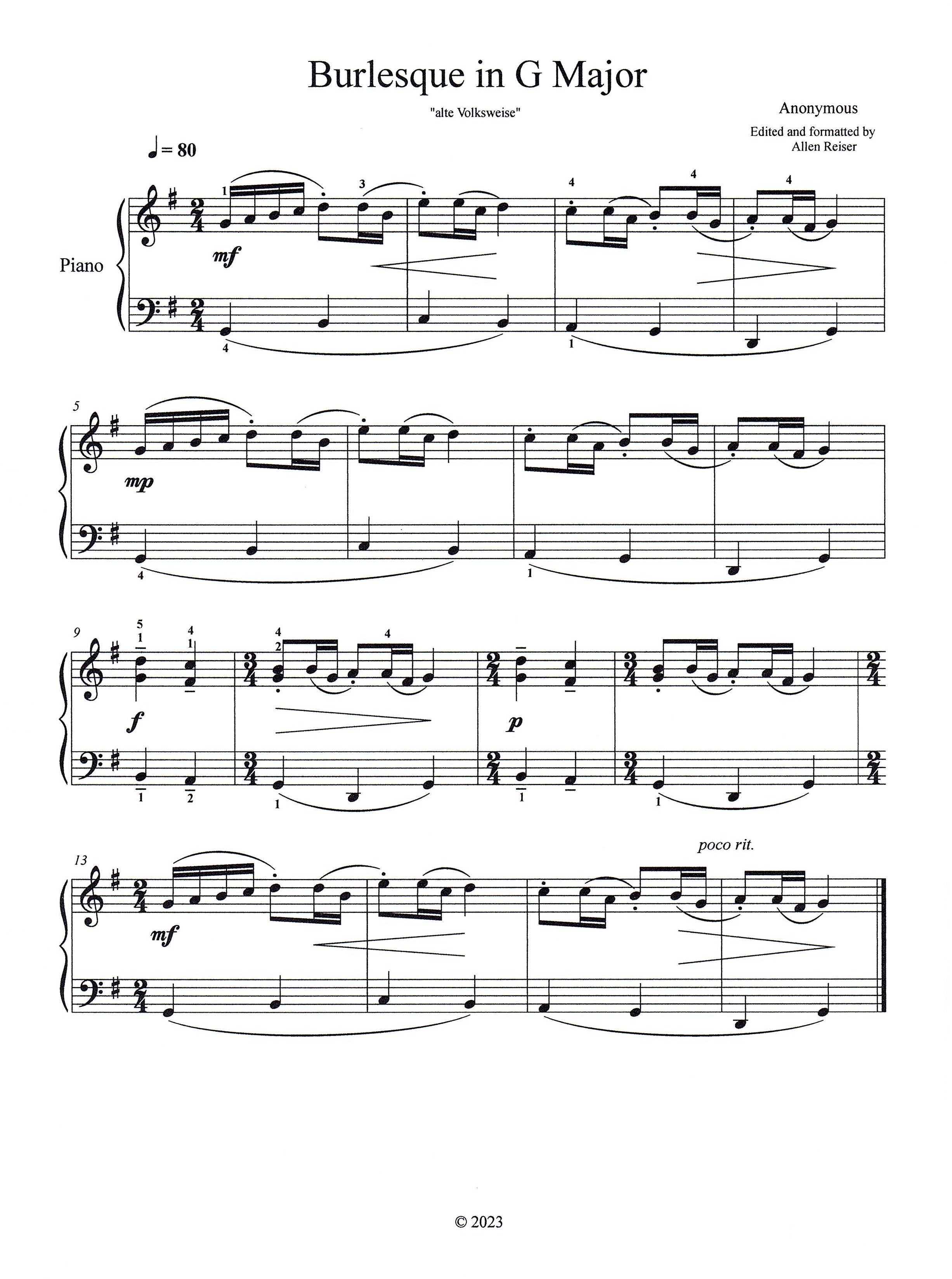Return to Musical Thoughts Main Page.
Burlesque in G major by Anonymous - A rhythmic clarification
Burlesque in G major is a fun little piece that Leopold Mozart (1719 - 1787), Wolfgang’s father, chose to include in an instructional and charming group of pieces which he collected in 1762, for his then six-year old son under the title of “Notebook for Wolfgang”.
Burlesque is defined as “a literary, dramatic or musical work intended to cause laughter by caricaturing the manner or spirit of serious works, or by ludicrous treatment”. It is not a dance form as it is sometimes erroneously referred to as.
I use this piece often as a teaching piece, as it is instantly engaging for the student, and is also a good introduction to 16th notes. However, I have always been perplexed with the way it is notated in terms of rhythm. For many years, I viewed these rhythmic abnormalities as the product of possibly an amateur composer. But over time, I have come to the conclusion that these rhythmic oddities are part of an attempt by a knowledgable composer to live up to the title of “burlesque” by using rhythmically “off” notation to give a “ludicrous treatment” to how the piece looks on the page. And viewed that way, it is a clever bit of fun! But for teaching purposes, I find it unsatisfactory, as it is difficult for the student to grasp just how the rhythm of the piece should be felt. Thus, I have re-notated it to give a clearer idea of how it should sound in terms of pulse and downbeats.
The first rhythmic “joke” is created by the piece starting on the 2nd beat of the bar, when the music clearly begins on the downbeat. Thus, I have reformatted this piece in such a way so that it starts on the downbeat. This gives a more logical and clearer sense of the pulse, resulting in a more convincing contour to the phrases.
The second rhythmic “joke” occurs in the central section. Even though it is not written as such, the music suddenly goes into alternating bars of 2/4 and 3/4 for the musical figure at bars 8 - 13. This is very unusual for music of this time. This causes the rhythmic emphasis of the musical material to be reversed when it is repeated in a way that is awkward and perplexing. As such, I have put this central section into a combination of 2/4 and 3/4, so that it will make sense to young pianists as regards to the placement of the downbeats in the recurrence of the musical material.
Lastly, and this has nothing to do with the burlesque element of the piece, the original version includes a left hand broken octave pattern that is now often simplified into quarter notes. As such, I have included here two versions. The first one with the left hand simplified, and the second one with the original left hand. All dynamic markings are supplied by myself. Feel free to print them out to use.

